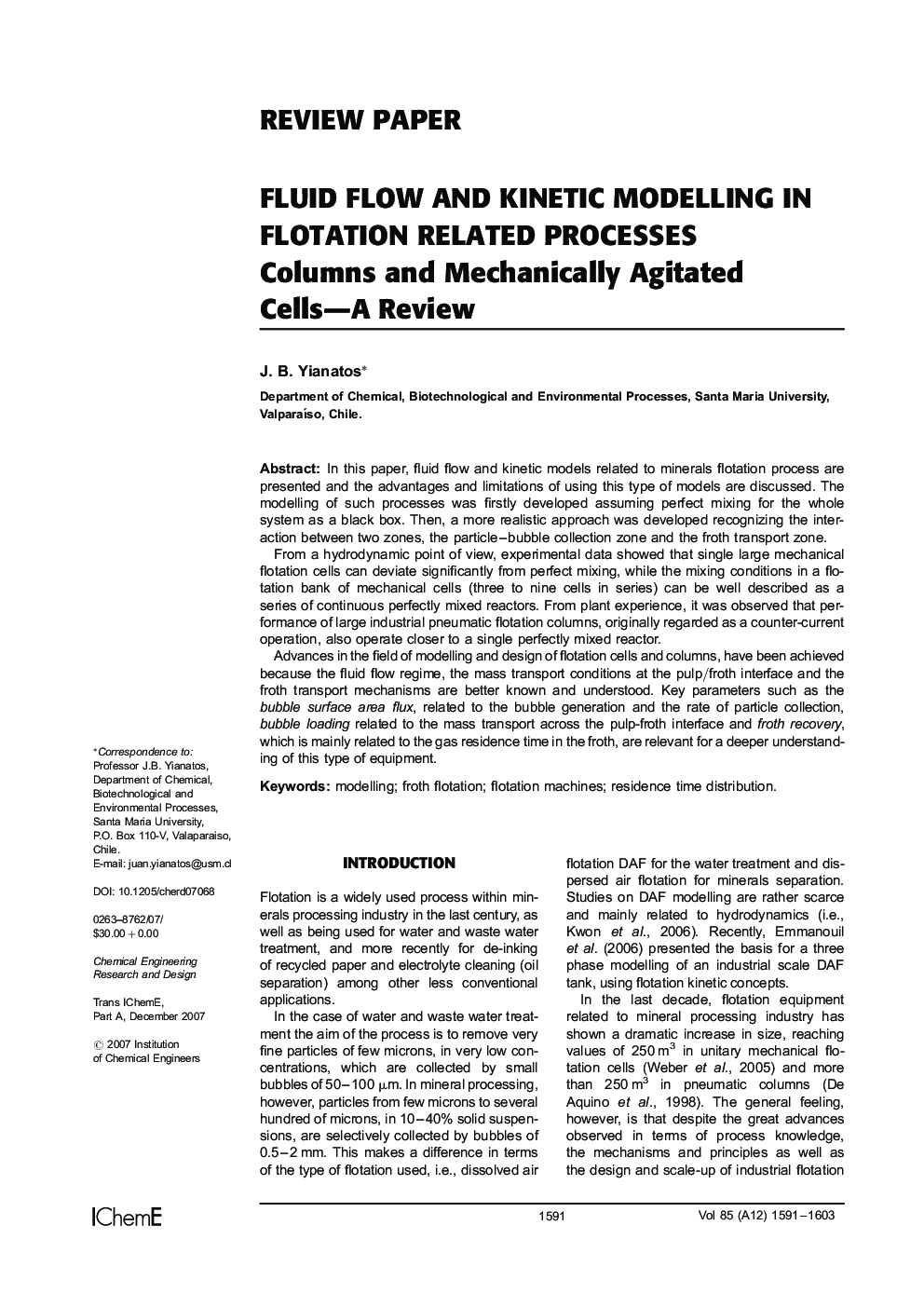| Article ID | Journal | Published Year | Pages | File Type |
|---|---|---|---|---|
| 622365 | Chemical Engineering Research and Design | 2007 | 13 Pages |
In this paper, fluid flow and kinetic models related to minerals flotation process are presented and the advantages and limitations of using this type of models are discussed. The modelling of such processes was firstly developed assuming perfect mixing for the whole system as a black box. Then, a more realistic approach was developed recognizing the interaction between two zones, the particle–bubble collection zone and the froth transport zone.From a hydrodynamic point of view, experimental data showed that single large mechanical flotation cells can deviate significantly from perfect mixing, while the mixing conditions in a flotation bank of mechanical cells (three to nine cells in series) can be well described as a series of continuous perfectly mixed reactors. From plant experience, it was observed that performance of large industrial pneumatic flotation columns, originally regarded as a counter-current operation, also operate closer to a single perfectly mixed reactor.Advances in the field of modelling and design of flotation cells and columns, have been achieved because the fluid flow regime, the mass transport conditions at the pulp/froth interface and the froth transport mechanisms are better known and understood. Key parameters such as the bubble surface area flux, related to the bubble generation and the rate of particle collection, bubble loading related to the mass transport across the pulp-froth interface and froth recovery, which is mainly related to the gas residence time in the froth, are relevant for a deeper understanding of this type of equipment.
